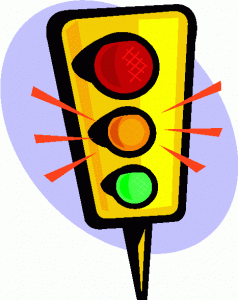Brace yourselves… here we go again. The ‘powers that be’ have come up with yet another development in food labelling to help stop our inevitable decline into obesity. And it’s certainly a real problem. It’s estimated 61% of the adult population in England is overweight or obese – higher than most other developed countries – and associated health issues cost the NHS over £5 billion pounds a year.
You’ll have seen the current labelling. Many foods have coloured ratings for their fat, saturated fat, salt, sugar and calorie content; red for high, amber for medium, green for low. In addition, they carry guideline daily amounts (GDAs) to give an idea of what you’ll be getting per portion.
The Food Standards Agency first proposed uniform traffic light food labelling in 2006, but some supermarkets and food companies, including Tesco and Kellogg’s, objected. They were concerned that labels based on 100g, not portion size, meant the food value of some products could be unfairly interpreted. And many shoppers don’t get to the point of a second glance. In reality, most shoppers are just plain perplexed by the whole thing.

While all products carry some form of nutritional labels, some are based on the traffic light system while others give the percentage of your GDA in the product. Add to which, most of the guidelines are in such small print, you need Sherlock Holmes’ magnifying glass to read them!
Then throw into the mix that some traffic lights are based on a standard 100g of product while others on a vague ‘serving size’. Clear as mud, isn’t it? Sweet and treat manufacturers have generally avoided displaying the traffic lights for 100g quantities. Their food values would look scary if eaten in those quantities.
in June this year, the Department of Health unveiled an initiative to make front of pack nutritional labelling consistent. This followed more than a year of consultations with the public, health organizations and the food and drink industry. But I’m not convinced it’s been time well spent.
For starters, it’s voluntary. Well that makes sense, doesn’t it? Do a year of expensive consultation and then make it optional! Businesses signed up to the new system include Marks & Spencer, PepsiCo and Mars as well as all the major supermarkets. Together they account for more than 60% of the food sold in the UK.
But some major companies like Coca-Cola, Cadbury-owner Mondelez, United Biscuits, have declined. Surprise, surprise. No wonder there’s confusion. When some of the biggest food and drink manufacturers are refusing to participate and the Government hasn’t made it mandatory, why was all that money, time and effort spent on it in the first place?
Will the new scheme really clear up the confusion? It’s a hybrid of previous systems, so it’ll contain elements of all of the different pack labelling schemes we are used to. So you’ll see the traffic light colours (based on a standard 100g size – but not always) and the amounts of calories, sugar, salt and fat per portion. And only from participating manufacturers, of course. Are you keeping up with all this?

Studies have shown traffic light labelling does influence behaviour. But is this a good thing? The Italians are certainly not impressed. And where exactly would this leave something that’s good for you… say an apple? Presumably it would come up red on the sugars front. Does this system really tell you much about the actual nutritional value of the food? A can of artificially sweetened drink would be green in every category. Certain products like fruit juices are going to look pretty poor the sugar front. And what about dairy products? There will be a red alert there!
All this re-labelling won’t be cheap either. It’s a fair bet the costs of this scheme will get passed onto the consumer. What about the logistical difficulties for pan-European manufacturers producing labelling purely for the UK? At a time when food prices are rising and the average household is struggling with costs, do we need this when the payback is questionable?
Health charities have long campaigned for this. The British Heart Foundation, Children’s Food Campaign and Diabetes UK are all supportive of the changes to the scheme. Don’t get me wrong – I support the goals of all of these organisations. Who wouldn’t? But will it be a great leap forward in tackling Britain’s obesity epidemic? I doubt it.
So until they come up with something that does work and the Government has the strength (I’m being polite here- feel free to insert a more ‘descriptive’ phrase) to enforce it, I’d be very grateful if they’d stop wasting my money.

